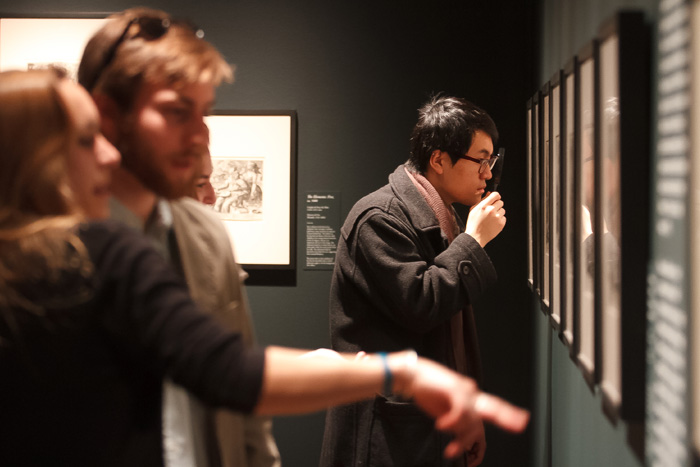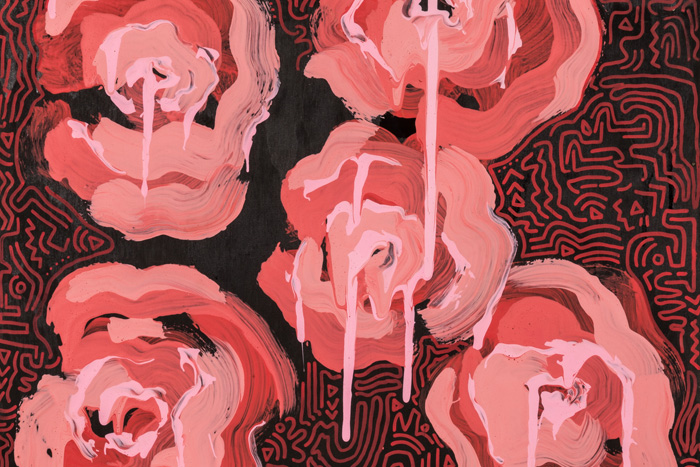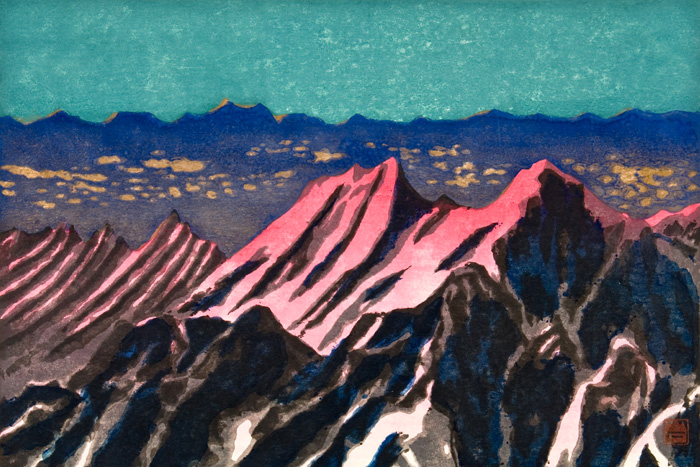A Brief (Art & Art) History

Yamaguchi Susumu (1897–1983), Mt. Hodaka at Day Break, 1957 woodblock print, ink and color on paper. Featured in “Timely and Timeless,” the 2019 senior art history majors’ capstone exhibition.
by MaryAlice Bitts-Jackson
There’s a telltale sign that distinguishes every new Dickinson art & art history graduate in the applicant pool. It’s the exhibition catalog—a full-color, professional-quality publication that students carry with them into grad school and job interviews. And it paints a vivid picture of the highlevel work they not only can do but have already done.
Dickinson’s graduating art & art history majors divide into two camps: studio art and art history. Each group hosts its own capstone exhibition, designed and presented by the students and shepherded by a different dedicated faculty member every year. As part of that work, they must produce an exhibition catalog, start to finish.

Roses, 2019, acrylic, marker, foamcore, by Adya Zecha ’19 for “Kinky Sink,” the senior studio-art majors’ capstone exhibition.
For the studio artists, the catalog is a showcase of highquality original artwork, contextualized by artist’s statements. For the art historians, it’s a means to present the research they’ve conducted on items in The Trout Gallery’s permanent collection or acquired from galleries, experts and collectors. Both catalogs are available at The Trout Gallery and troutgallery.org, and the art history catalogs are uploaded onto Dickinson Scholar and catalogued internationally, with their own ISBN numbers.

Yamaguchi Susumu (1897–1983), Mt. Hodaka at Day Break, 1957 woodblock print, ink and color on paper. Featured in “Timely and Timeless,” the 2019 senior art history majors’ capstone exhibition.
“Because of the college’s ties with high-level galleries, experts and collectors, the students have access to extraordinary resources and works, and their original research has value in the scholarly community,” says Melinda Schlitt, professor of art history, who connected art history majors in the class of 2017 with Italian 15th- through 18th-century drawings. “It’s the culmination of their education put into practice, and I don’t know of any other liberal-arts programs that do quite what we do.”
Fine-arts department approved at Dickinson in 1962 (renamed Department of Art & Art History in 2001) Average number of students in senior seminar (since 1989) Highest number of works shown in one student exhibition (typically, 40-60) average hanging height of gallery pieces (from floor to center of work) catalogs printed for each exhibition guests at student exhibitions, on average (300-400 on opening night) objects in The Trout Gallery’s permanent collection First art history catalog was placed online in 2004 The most downloaded art history catalogue on Dickinson Scholar, “Bawdy Brits & West End Wit,” has been retrieved 1,286 times Furthest-traveled work in The Trout Gallery collection (voyaged from Papua, New Guinea)9
78
52”
~400
1,750
9,000
8,975
The seminar and experience at The Trout Gallery afforded me and other students the unique opportunity to gain real-world experience in understanding what it takes to plan, curate and mount a temporary art exhibition—a rarity for undergrad majors. Many art history graduate students do not even get that chance. I am still applying elements of what I learned to my job as a curator.” —Scott Schweigert ’92, curator of Reading Public Museum
Read more from the spring 2019 issue of Dickinson Magazine.
TAKE THE NEXT STEPS
Published May 2, 2019